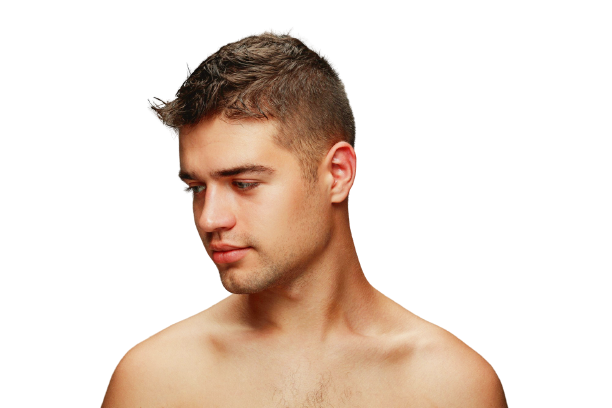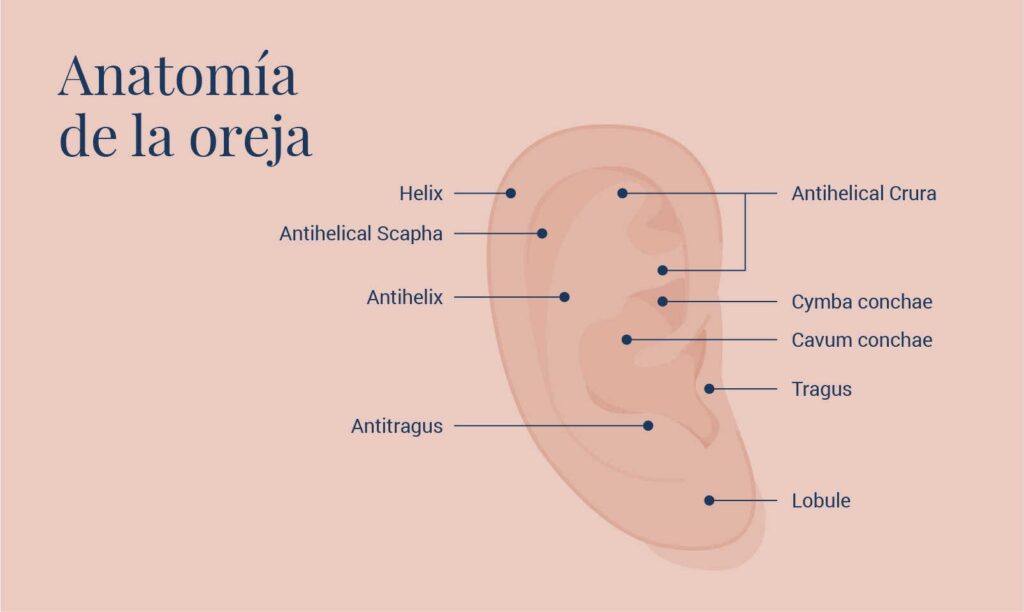Do you want to improve the appearance of your face?

Otoplasty is a plastic surgery for the repair and aesthetic correction of the ears. This type of intervention can reduce the size of the ears, change their shape, solve injuries or congenital defects.
The specialist makes a diagnosis during the consultation and assesses the technique needed for the patient. The surgery may require between 2 and 3 hours depending on the technique performed and the problem to be treated.
In the case of “protruding ears”, the pinnae are farther apart from the head than usual. In addition, another characteristic is the lack of definition in the crease of the ear (called antihelix crease, which is the one in front of the edge of the ear) and the auricular concha is usually very detached.
Otoplasty to correct protruding ears requires removing excess skin from the back of the ears, and weakening the cartilage (scratching it) to bend it so that the incision scar is completely hidden behind the ear.
When the antihelix is poorly developed, it is necessary to define it, and for this purpose the Mustardé technique is applied, which consists of folding the cartilage with a few stitches. If the concha is detached from the head, the Furnas technique is used, which sutures it to the mastoid bone at the back of the ear.
With otoplasty we try to achieve a result as natural as possible. In our clinic we are not sympathetic to remove fragments of cartilage, or cut, because they can be edges instead of natural curves.

It is one of the few cosmetic surgeries that are performed in both children and adults. In the case of small children it may be necessary to apply general anesthesia. For adults, local anesthesia is sufficient.
Otoplasty does not change the positioning of the ears or alter hearing ability.
Otoplasty techniques vary according to the type of correction needed. The specific technique implemented by the plastic surgeon will determine the location of the incisions and the scars that will remain afterwards.
The incisions may be located in:
The surgery usually takes about one to two hours.
After otoplasty, the ears are bandaged to protect and support them. During the postoperative period it is likely that discomfort or itching may occur. They do not present inconveniences since they are very well tolerated with the medication for pain control and inflammation that is prescribed after the intervention.
Post-intervention is recommended:
Consider wearing clothing with loose-fitting collars or that should not be worn across the head, such as shirts.
Within 24-48 hours, the bandage is removed and then the band is placed and should also be worn at night to prevent the ears from moving during sleep. The ears are likely to be swollen and reddened, but once the bandages are removed, the change in the appearance of the ears can be seen. These changes are permanent.
Some issues that may arise after the intervention:
Generally, the scars are hidden behind the ears or hidden in the folds of the ears.
During the healing process some asymmetry may occur as a result of the changes. While it is true, it is possible that a pre-existing asymmetry may not be corrected with surgery.
During the treatment process the sensitivity of the skin in the treated area may be temporarily affected. In exceptional cases, the changes may be permanent.
The stitches made to reconstruct the new shape of the ear may come out to the surface of the skin (stitch extrusion). In this case, it will be necessary to remove them as it may cause inflammation in the affected skin. As a result, you may require additional stitches or a revision of the previous surgery.
Otoplasty can result in unnatural rims that give the appearance of flattened ears.
It depends on whether we will do it only with local anesthesia or with general anesthesia. With general anesthesia to the price of otoplasty must be added the cost of clinic and anesthesia.
Although it has to be individualized, the price of an otoplasty starts at 1800 euros.
EXCELENTETrustindex verifica que la fuente original de la reseña sea Google. Maravillosa experiencia con la Doctora Salvador!!!Trustindex verifica que la fuente original de la reseña sea Google. Estic encantada! Son els millors!Trustindex verifica que la fuente original de la reseña sea Google. Muy profesionales. El trato es atento y cercano. Los resultados óptimos. He quedado muy satisfecho, los recomiendo totalmente.Trustindex verifica que la fuente original de la reseña sea Google. Es la mejor clínica. Yo fue operado por el Dr. Benito. Durante mucho tiempo elegí una clínica y un médico, dudé. Pero tuve mucha suerte, ¡caí en manos de oro! Estoy muy contenta con el resultado inmejorable. El doctor es un especialista muy atento y elegante. Todo el personal de la clínica es muy agradable. 😊🌟✨💫Trustindex verifica que la fuente original de la reseña sea Google. Muy buena clínica, la doctora Salvador explica todo de manera que sabes que estas en buenas manos.Trustindex verifica que la fuente original de la reseña sea Google. Espectacular resultado gracias al dr.benito y a su equipo🥰Trustindex verifica que la fuente original de la reseña sea Google. Hace más de 15 años que confío en el doctor Jesús Benito. Un gran cirujano y una persona encantadora. Gracias por todos los cuidados !!!!Trustindex verifica que la fuente original de la reseña sea Google. Muy agradecido al Dr Benito por la confianza que se gana y que te ayuda a tomar decisiones. Muy satisfecho con su profesionalidad y los resultados. Y muy contento con su equipo por lo cómodo y fácil que te hacen todo.
El Dr. Guillermo Rodríguez Márquez es especialista en Cirugía Plástica, Reparadora y Estética, con una destacada trayectoria internacional en España y el Reino Unido. Licenciado en Medicina por la Universitat de Barcelona, se formó en Cirugía Plástica en el Hospital Clínic de Barcelona. Es Fellow del European Board of Plastic Reconstructive and Aesthetic Surgery y posee un Máster en Dirección y Gestión Sanitaria.
Ha trabajado en hospitales de referencia como el University Hospital of Birmingham NHS y el Queen Victoria Hospital NHS Trust, especializándose en cirugía de la mano y miembro superior. En España, formó parte del Hospital Universitario Miguel Servet, donde dirigió la Unidad de Cirugía Plástica Infantil.

It is normal to feel some discomfort and pain after surgery, but this can be controlled with pain medication prescribed by your surgeon. Most patients report that the pain subsides after a few days.
Recovery varies from person to person, but in general, patients are expected to return to most normal activities after one to two weeks. It is important to follow your surgeon’s postoperative instructions and attend all scheduled follow-up appointments.
The goal of otoplasty is to achieve a natural, balanced appearance of the ears. Incisions are usually made behind the ears and the scars are very inconspicuous.
Like any surgery, there are potential risks, including bleeding, infection, abnormal scarring, and changes in the sensation of the ears. However, these risks are rare.
No, if you currently have an ear infection, you should wait for the infection to clear before scheduling surgery. Your surgeon will provide you with specific guidelines on when it is safe to schedule your surgery.